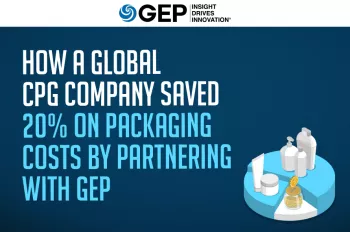Even veteran procurement pros often find MRO procurement a challenge. It encompasses a wide, complex mix of highly technical products and specialized services.
GEP has a proven track record of successfully sourcing maintenance, repair and operations (MRO). Over the past dozen years, GEP has managed billions of dollars in MRO spend for Fortune 500 and Global 2000 companies in more than 20 industries and every major market.
Same Goals, Different Priorities
End users typically have strong attachments to their MRO procurement suppliers — ensuring safety, avoiding downtime and outages are the most crucial factors. We keep in mind that end users have different priorities other than achieving savings. We are also well aware of the chronic challenges of sourcing MRO:
- Substantial spend spread across multiple sites and categories
- Many unique SKUs, many of which are used only on certain equipment
- Unpredictable demand — some 70 percent of MRO items turn less than once every two years
- A "just in case" mind frame, buying more than is needed
- Large number of vendors, including local vendors at individual sites
- Spot buys — unplanned purchases can account for 50 percent of total MRO spend
- Data management challenges — myriad number of specs, part numbering, systems and more
We work with your MRO leads to meet both the end-user expectations and deliver you substantial savings by employing the following best practices:
- The MRO procurement strategy is focused on creating strategic advantages
- Regional- and category-specific issues/constraints are understood and addressed
- Category strategies are developed and communicated across the enterprise
- MRO procurement is perceived as a high-value generator by top management
- Center-led procurement drives the development of global MRO procurement strategies, policies and processes executed at the local level, and assigns category management responsibility for key categories
- All categories are sourced and revisited by cross-functional teams
- Enterprise spend is leveraged
- Procurement is a key driver behind simplification and standardization of sourced products and services
- Sourcing focuses on strategic suppliers thus reducing the size of the supply base
- Proactively use technology to manage the maintenance, repair and operations (MRO) program
- Heavy usage of strategic sourcing tools (eRFX, auctions, contract management)
- Heavy use of spend management tools to understand and manage MRO expenditures and compliance
- Highly automated procurement processes
- Focused on online ordering, invoicing and payment
- Segment items by asset criticality
- Proactively monitor usage to balance asset availability and inventory cost
- Adjust usage forecasts at a minimum annually
- Selective use of VMI/Consignment to drive down inventory costs
- Utilize SLAs to define expectations and KPIs to monitor effectiveness
- Transaction-oriented procurement activities are actively being eliminated
- Standardized/Aligned processes across the enterprise
- The MRO procurement strategy is focused on creating strategic advantages
- Regional- and category-specific issues/constraints are understood and addressed
- Category strategies are developed and communicated across the enterprise


